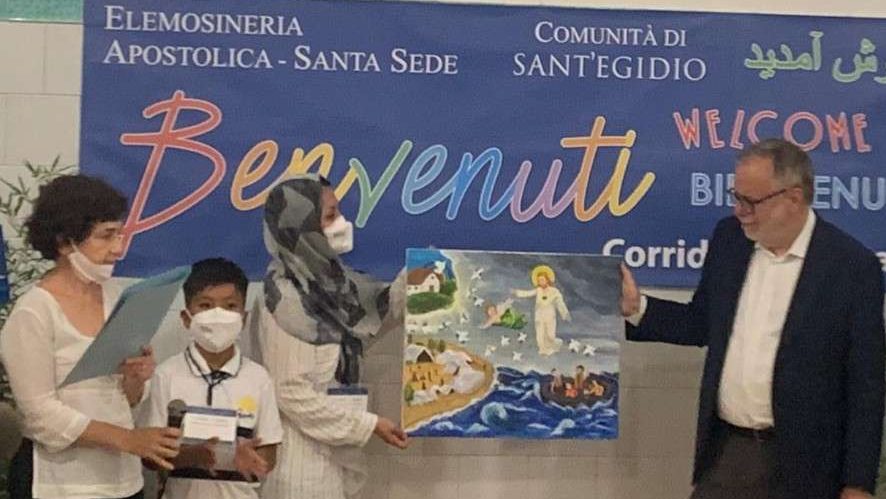A Catholic community welcomed Thursday the first refugees to arrive in Rome via a humanitarian corridor through the island of Lesbos since Italy’s coronavirus lockdown.
The 10 refugees from Afghanistan had been stuck in transit in the Moria refugee camp on the Greek island. The camp -- originally intended to hold 3,000 refugees -- now has more than 19,000 people.
“Moria is known as the hell of Europe,” one refugee, Razieh Gholami, told journalists upon her arrival in Rome July 16, four months after Italy closed its borders completely to prevent the spread of the coronavirus.
“The refugees who live in Moria live in a difficult, frightening condition where fundamental rights are repressed and they have no way of returning or moving forward,” she said.
Pope Francis had advocated for the relocation of these refugees in Italy via a humanitarian corridor organized at his request through the collaboration of the Office of Papal Charities and the Italian and Greek authorities to help young people and families seek asylum in Italy.
These Afghan refugees are the final part of a group of 67 migrants brought to Italy since 2016 by the humanitarian efforts of the Holy See and the Catholic Community of Sant’Egidio, which also provides support for the refugees’ integration into Italian society.
For Gholami, the help that she received from the Catholic Church to enable her to travel to Italy was a godsend. She said that she had begun to ask herself in the camp why God would allow human beings to suffer so much.
“Then suddenly I saw guardian angels with a heart full of affection for others,” she said. “They came from God to help the refugees.”
Gholami, who has been recognized for her art painted inside of the refugee camp, presented the Sant’Egidio community with one of her paintings. It depicts Christ sending an angel from heaven to fly to the refugee camp.
“I dedicate this painting to those angels of the Sant’Egidio community, always ready to help the desperate,” she said.
More than 3,000 refugees from the Middle East and Africa have arrived in Europe via the humanitarian corridor made possible by the Greek and Italian authorities, according to Sant’Egidio.
Catholic volunteers in Rome welcome Afghan refugee families, who arrived today after months of waiting in a refugee camp on the island of Lesbos.
They are among the first refugees to arrive after Italy’s lockdown. pic.twitter.com/nnJskOzl5g
— Courtney Mares (@catholicourtney) July 16, 2020
Formerly relocated refugees were present to welcome the new arrivals with a volunteer-made lunch. Among them was Majid Alshakarji, a dentistry student in Rome who escaped the Syrian War in 2016 at the age of 15 with the help of Pope Francis.
“It's a bad feeling when you have to leave your country by force. Because it's not your choice, you just have to leave,” Alshakarji told CNA.
“In Aleppo it was a fairly difficult journey, where you had to walk maybe 8 kilometers (five miles) with bombs underground and even bombing above,” he said.
After passing through Aleppo, his family fled to Tunisia, where he said they faced many problems leading them to return to Syria in order to leave for Turkey.
“Then we went to Greece. In Greece we had to stay 50 days which were not easy living in the camp … then came the pope, who wanted to be a witness for everyone,” he said.
Alshakarji’s family was one of the three Syrian refugee families who came to Rome with Pope Francis at the end of the pope’s visit to the island of Lesbos in 2016. He has now lived in Rome for four years and is studying at a local university to become a dentist.
“We have been allowed to have a new life in a new country … It is a beautiful experience,” he said.

